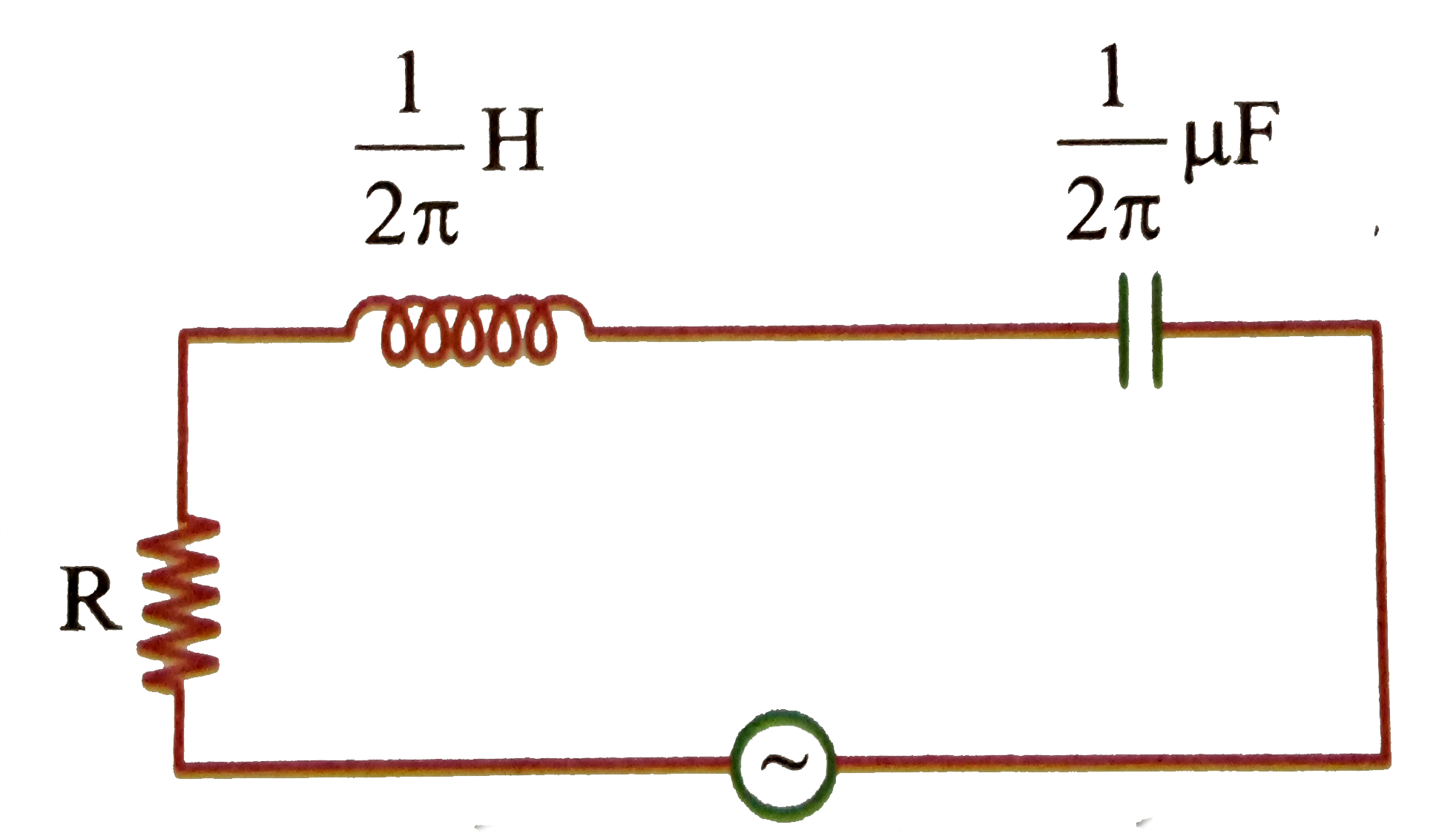In LCR series AC circuit, the current
is always in phase with voltage
always lags behind the generator voltage
always leads the generator voltage
may be in phase, lag behind or lead by the generator voltage depending on the values of L,C and R
The correct Answer is:D
To solve the problem regarding the phase of the current in an LCR series AC circuit with respect to the voltage, we can follow these steps:
1. Understand the Components:
- In an LCR series circuit, we have three components: a resistor (R), an inductor (L), and a capacitor (C). The circuit is connected to an AC voltage source.
2. Identify the Voltage Relationships:
- The voltage across the resistor (Vr) is in phase with the current (I).
- The voltage across the inductor (Vl) leads the current by 90 degrees (current lags voltage).
- The voltage across the capacitor (Vc) lags the current by 90 degrees (voltage lags current).
3. Draw the Phasor Diagram:
- Start by drawing the phasor for Vr in the direction of the current.
- Draw Vl leading the current by 90 degrees.
- Draw Vc lagging the current by 90 degrees.
4. Determine the Resultant Voltage:
- The total voltage in the circuit is the vector sum of the voltages across the resistor, inductor, and capacitor.
- If Vl (inductive voltage) is greater than Vc (capacitive voltage), the resultant voltage will lead the current.
- If Vc is greater than Vl, the resultant voltage will lag behind the current.
5. Consider the Resonance Condition:
- At resonance, the inductive and capacitive reactances are equal (XL = XC), leading to a situation where the circuit behaves purely resistively.
- In this case, the phase angle is zero, meaning the current and voltage are in phase.
6. Conclude the Phase Relationship:
- Depending on the values of L, C, and R, the current can either be in phase with the voltage, lag behind it, or lead it.
Final Answer:
The current in an LCR series AC circuit can be in phase with the voltage, lag behind it, or lead it, depending on the values of L, C, and R. Therefore, the correct option is D: "Maybe in phase, lag behind, or lead the generator voltage depending on values of L, C, and R."
---
- In an LCR series circuit, we have three components: a resistor (R), an inductor (L), and a capacitor (C). The circuit is connected to an AC voltage source.
- The voltage across the resistor (Vr) is in phase with the current (I).
- The voltage across the inductor (Vl) leads the current by 90 degrees (current lags voltage).
- The voltage across the capacitor (Vc) lags the current by 90 degrees (voltage lags current).
- Start by drawing the phasor for Vr in the direction of the current.
- Draw Vl leading the current by 90 degrees.
- Draw Vc lagging the current by 90 degrees.
- The total voltage in the circuit is the vector sum of the voltages across the resistor, inductor, and capacitor.
- If Vl (inductive voltage) is greater than Vc (capacitive voltage), the resultant voltage will lead the current.
- If Vc is greater than Vl, the resultant voltage will lag behind the current.
- At resonance, the inductive and capacitive reactances are equal (XL = XC), leading to a situation where the circuit behaves purely resistively.
- In this case, the phase angle is zero, meaning the current and voltage are in phase.
- Depending on the values of L, C, and R, the current can either be in phase with the voltage, lag behind it, or lead it.
The current in an LCR series AC circuit can be in phase with the voltage, lag behind it, or lead it, depending on the values of L, C, and R. Therefore, the correct option is D: "Maybe in phase, lag behind, or lead the generator voltage depending on values of L, C, and R."
Topper's Solved these Questions
Similar Questions
Knowledge Check
In an LCR series ac circuit, the current is
Aalways in phase with the voltageBlags the generator voltageCleads the generator voltageDnone of theseIn an LCR series circuit the current is
Ain phase with applied emfBlags the applied voltageClead the applied voltageDmay lead or lag behind the applied voltageAssertion : At resonance, LCR series circuit have a minimum current.
Reason : At resonance, in LCR series circuit, the current and e.m.f. are not in phase with each other.AIf both assertion and reason are true and reason is the correct explanation of assertion.BIf both assertion and reason are true but reason is not the correct explanation of assertion.CIf assertion is true but reason is false.DIf both assertion and reason are false.
In a series LCR circuit, the frequency of the source is more than resonance frequency. The current in the circuit leads the voltage in phases(True/false).
View SolutionSTATEMENT-1 : In series LC(AC) circuit, the current is infinite at resonance.
STATEMENT-2 : In parallel LC(AC) circuit, the current is zero at resonance.
STATEMENT-3 : Series LCR(AC) circuit is used at resonance for turning radio receivers.
View SolutionIn a series LCR circuit

View SolutionIn an LCR. series circuit the resonating frequency can be decreased by -
View SolutionIn LCR series circuit if the frequency is increased, the impendance of the circuit
View Solution
